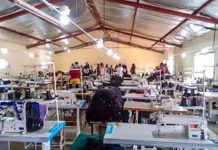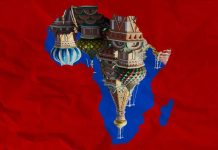Africa-Press – Lesotho. The African telecom world has undergone a small revolution. On 4 October 2021, IHS Towers, Africa’s first telecom infrastructure provider (‘towerco’), was listed on the New York Stock Exchange.
Its objective is to raise around $380m in net proceeds and reach a valuation of more than $7bn, including debt. This would make it the largest ever listing for an African company.
Portfolio diversification This listing comes less than two years after that of its competitor Helios Towers, which has been listed on the London Stock Exchange since October 2019.
The two towercos had first tried their luck back in 2018 but then gave up, notably because of the instability of the African markets in which they operated. Today, they have diversified their portfolio and are enjoying strong growth.
IHS has nearly 30,000 towers in five African countries (Nigeria, Côte d’Ivoire, Cameroon, Zambia and Rwanda) as well as in Brazil, Peru, Colombia and Kuwait, and is looking to set up operations in Saudi Arabia and Egypt.
After a difficult year “because of Covid-19,” an IHS representative tells us that Africa’s leader in towercos recorded a 21.2% growth in turnover during the second quarter of 2021.
Helios, the third-largest on the continent, owns more than 8,000 towers in Tanzania, DRC, Ghana, Republic of Congo, South Africa, Senegal and Oman, and is considering expanding into nine new African countries, including Morocco, Egypt and Madagascar. The company reported a 4% growth in revenue during the first half of 2021. Mobile money on the rise
“The African telecoms market brings great opportunities for growth, with a large and growing population, smartphone usage that remains low, but which is growing at record speed, especially when it comes to digital services such as mobile money,” says Dion Bate, Moody’s Africa and Middle East telecoms specialist.
Many African operators have experienced similar growth: Airtel’s turnover rose by 19% in 2020, MTN’s by 10.9% and Vodacom’s by 7.4%, according to Moody’s.
The pandemic we have just experienced has proven how resilient telecoms infrastructures are. It is now up to IHS, Helios and others to prove that their model will enable Africa to catch up in terms of connectivity.
However, these good results can no longer be attributed to voice revenues (VoIP), but rather the continent’s greater internet coverage. African operators, which still own nearly 60% of Africa’s telecom towers, now prefer to focus on their core business, digital services, and tend to outsource the management of these passive infrastructures.
This practice is prevalent not only in the US – where 90% of towers are owned by independent towercos, according to EY – but also in Latin America (55%) and India (52%).
“Africa began adopting it when India’s Bharti Airtel arrived on the continent 10 years ago,” says Thecla Mbongue, an analyst for the firm Omdia. By outsourcing the management of passive telecom infrastructures to independent companies, operators are relieved of maintenance costs.
The CEO of a towerco, for example, no longer rents access solely to the operator who sold it to them, but to several, and thus shares these same costs. In theory, everyone wins. “We thought Airtel was going to outsource all its infrastructure,” says the analyst.
However, “the lack of regulation in some countries and the fear of competition” made the Indian firm, which manages some of its African infrastructures internally, decide otherwise.
According to Mbongue, telecom infrastructure outsourcing stagnated for a while in Africa, but has gained momentum in the last three years. Boosting the energy transition
MTN has played a major role in this as it is currently reselling its telecoms infrastructure in droves, particularly in South Africa. It also intends to take advantage of the IHS IPO to reduce its 29% stake in the company and reinvest it in digital services.
Orange, Airtel, Millicom, Vodacom, and others are following suit. This subcontracting sometimes takes the form of consortia made up of a towerco and one or more operators.
IHS has just signed this type of agreement with Egypt Telecom, which gave rise to IHS Telecom Egypt on 6 October 2021. Others have decided not to entrust the management of their infrastructures to another company, but to create a dedicated subsidiary instead.
This is the case with South Africa’s Telkom, which created Gyro Group. Vodacom may also decide to adopt this strategy, thus imitating its parent company Vodafone, which created Vantage Towers in 2019 for this purpose, according to the site TowerXchange.
In exchange for this delegation of tasks, and still with a view to modernising networks, African telecom operators are demanding economies of scale from towercos. All the more so as they are under “increased pressure from governments to develop networks in remote areas, often deemed unprofitable,” says Mbongue.
Thus, the towercos market tends to be concentrated around three players: IHS, a pioneer on the continent, American Tower, which notably purchased the pan-African Eaton Towers in 2019, and Helios Towers, which acquired the South African SA Towers the same year.
The rest of the African towercos are made up of Africa Mobile Networks, Pan African Towers, Infratel, US’ SBA Communications, which bought Atlas Towers, a major player in South Africa, and a handful of national towercos.
“This market concentration is likely to accelerate in the future as it is driven by the adoption of 4G and, in the longer term, 5G.
The latter should request that towercos install more and more small cells to increase the density of their fleet [small radio infrastructures for better coverage of last generation networks].
“In addition, operators are asking that towercos transition towards greener energies,” says Sola Lawson, director of African Infrastructure Investment Managers (AIIM), one of IHS Towers’ shareholders.
“The pandemic we have just experienced has proven how resilient telecoms infrastructures are. It is now up to IHS, Helios and others to prove that their model will enable Africa to catch up in terms of connectivity.”
For More News And Analysis About Lesotho Follow Africa-Press






